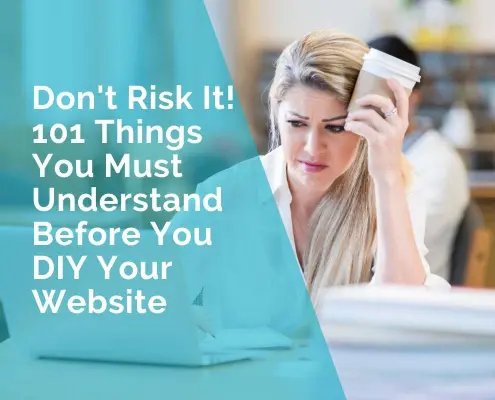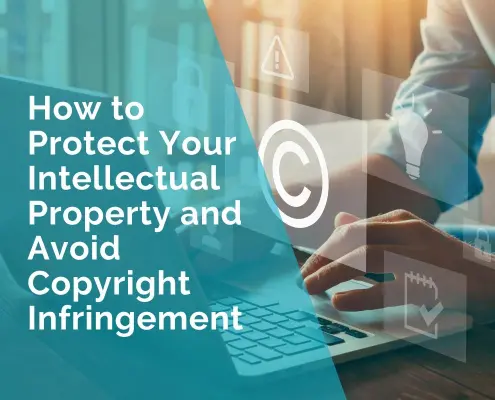Building a Business Website in Australia? Read This First
Launching a new website for your business is a big deal, especially if you’re doing it for the first time. Whether you’re a local café, a tradie going solo, or a small team ready to scale, having an online presence in 2025 isn’t optional. It’s how people find you, trust you, and decide if they want to work with you.
But here’s the thing: rushing to get something online without understanding the basics can lead to expensive mistakes. You might end up with the wrong domain name, unreliable hosting, or a site that doesn’t reflect your brand, and that can slow you down before you even get started.
This guide walks you through the essentials of setting up a site that actually works for your Aussie business — from picking the perfect domain name to making sure your site is fast, secure, and ready to go live. If you’re serious about getting found online and making a solid first impression, you’re in the right place.
It All Starts With the Domain Name
Before you even think about colours, content, or logos, you need to lock in your domain name — because it’s not just your address on the web, it’s your digital identity. Choosing the right one is a crucial first move, especially for Australian businesses where your domain can signal trust, locality, and professionalism right out of the gate.
Your domain name is often the first thing potential customers see, whether it’s printed on a business card, linked in an email, or typed into a browser. A clean, easy-to-remember domain builds credibility. A confusing, long, or irrelevant one? Not so much.
That’s why it pays to spend a little time thinking through your options before locking it in. Ideally, your domain name should match your business name or come close. And if you’re targeting Australian customers, securing a .com.au or .au version is a smart move — those local extensions help show you’re a trusted, Aussie-based business.
Now, when it comes to buying and understanding how to register a domain name in Australia, the process is simpler than many people expect. You don’t need to be a tech expert. All it takes is choosing a reliable domain registrar (like an accredited Aussie provider), checking if your desired name is available, and going through a short verification step if you’re registering a .com.au or .au domain (which usually requires an ABN, ACN, or similar business ID).
One common mistake? Waiting too long. Domain names get snapped up fast, especially short, brandable ones. Even if you’re not ready to build the site yet, it’s smart to register your domain early so you’ve got it secured.
Once that’s sorted, you’re ready for the next big step: hosting your site.
Choosing the Right Hosting for Your Needs
With your domain locked in, the next step is finding the right home for your website. This is where web hosting comes in — and no, it’s not all the same.
Your hosting provider is the behind-the-scenes engine that keeps your site live and running smoothly. If you pick a dodgy one, you could end up dealing with slow load times, outages, or support that disappears the second something breaks. And let’s be honest — when your website is down, so is your business.
For Aussie businesses, choosing a hosting provider with servers in Australia is a big plus. Local hosting means faster speeds for your local audience, better data privacy compliance, and access to local support teams who understand your time zone (and don’t keep you on hold at 2am).
You’ll also want to consider what type of hosting suits your business best:
- Shared hosting is great for small sites just getting started — it is the affordable option if you’re concerned about the costs of a good hosting service.
- VPS hosting offers more control and performance if you’re expecting higher traffic or running more advanced tools.
- Managed WordPress hosting is ideal if you want speed, security, and support without getting your hands dirty with backend stuff.
And don’t forget security features. Look for things like free SSL certificates, daily backups, and proactive threat monitoring. These aren’t just “nice to have” anymore — they’re baseline essentials.
In short, your hosting isn’t just a technical choice — it’s a business decision. Think long-term. A reliable provider will save you time, headaches, and potentially a ton of money down the road.
Content That Connects With Your Audience
Now that your domain and hosting are sorted, it’s time to think about what your website actually says. This is where a lot of Aussie businesses drop the ball — because it’s easy to assume that just having a few pages up is enough. But content isn’t filler. It’s the voice of your brand, and it needs to resonate with the people you want to reach.
At a minimum, your site should have a few core pages that clearly explain who you are and what you do:
- A Home page that grabs attention fast and makes people want to stick around
- An About page that builds trust (especially for small businesses and sole traders)
- A Services or Products page that’s clear and conversion-focused
- A Contact page that makes it easy to reach you
But it’s not just about structure — it’s about tone. If you’re serving local clients, don’t be afraid to sound like a real Aussie business. Be friendly, clear, and confident. Speak to your audience like you’d speak to a customer walking through your door. Avoid jargon. Show personality. That’s what turns a visitor into a customer.
And let’s not forget SEO. Your content should naturally include keywords your audience is searching for — without overdoing it. Talk about your location, your services, and the problems you solve. That helps search engines understand what your site’s about, and it makes your content more helpful for actual humans too.
Bottom line? Your content needs to do more than fill space. It needs to reflect your business, answer questions, and help visitors feel like they’re in the right place.
Design and Usability Matter More Than You Think
So you’ve got a solid domain, reliable hosting, and content that speaks your brand. Now let’s talk about how it all looks — because when someone lands on your site, it takes just seconds for them to make a judgment. First impressions online are brutal, and design plays a huge role in whether someone sticks around or bounces.
Clean, simple design always wins. That doesn’t mean your site has to be boring — it just means it should be easy to read, navigate, and use. Cluttered pages, confusing menus, or outdated graphics can make your business look less trustworthy, even if you’re the best in your field.
And if your site isn’t mobile-friendly? Forget it. More than half of Aussies browse on their phones, and Google prioritises mobile usability in search rankings. Responsive design isn’t a “nice-to-have” — it’s a non-negotiable.
Navigation should be intuitive too. Visitors shouldn’t have to click through five pages just to find your phone number or opening hours. The goal is to remove friction and make it easy for people to do what they came to do — whether that’s book an appointment, buy something, or just get in touch.
If you’re not a designer, don’t stress — there are plenty of high-quality WordPress templates that look great right out of the box. Better yet, consider working with a local web designer who understands how Aussie users interact with sites and can tailor your layout to match.
Remember, good design isn’t just about looking pretty. It builds trust, keeps visitors engaged, and helps drive real business results.
Launching Smart With SEO and Analytics in Place
You’re almost there — the site looks sharp, the content’s on point, and everything feels ready to go. But before you hit that “publish” button, there are two final steps that can make or break your launch: SEO and analytics.
First up, SEO — search engine optimisation. You don’t need to be an expert, but setting up the basics will help your site get found by the right people. Make sure each page has a unique title tag and meta description. Use headers properly (H1 for page titles, H2s for subheadings) and sprinkle in relevant keywords where they make sense — especially those tied to your services and location.
Also: image optimisation. Give your image files meaningful names (not just “IMG_9321.jpg”) and add alt text so they’re accessible and search-friendly. Little details like these help search engines understand your content, and they contribute to better rankings over time.
Now onto analytics. This is the part most small businesses skip — but it’s seriously valuable. Set up Google Analytics and Google Search Console before you launch. These tools give you real-time insights into how people are finding your site, what they’re clicking on, and where they’re dropping off.
With that data, you’re not just guessing what’s working — you’ll know. That means you can improve your content, adjust your SEO strategy, and make changes that actually move the needle.
Launching a website isn’t the finish line — it’s the starting point. The more prepared you are from day one, the easier it is to grow, improve, and stay ahead of your competition.
Conclusion
Getting your business online is a huge milestone — but it doesn’t have to be overwhelming. By taking the time to get your domain name right, choosing a local hosting provider you can rely on, and building a site with clear content, smart design, and solid SEO, you’re setting yourself up for long-term success.
Think of your website as your digital storefront. It should reflect the same level of professionalism and care that you bring to your work every day. And just like in the real world, first impressions matter, trust is earned quickly, and performance counts.
Whether you’re a one-person show or a growing team, the steps you take before launching your website can make all the difference. Slow down, plan it out, and don’t be afraid to ask for help — because when your site does its job right, it becomes one of the most powerful tools your business has.
***************
LP









